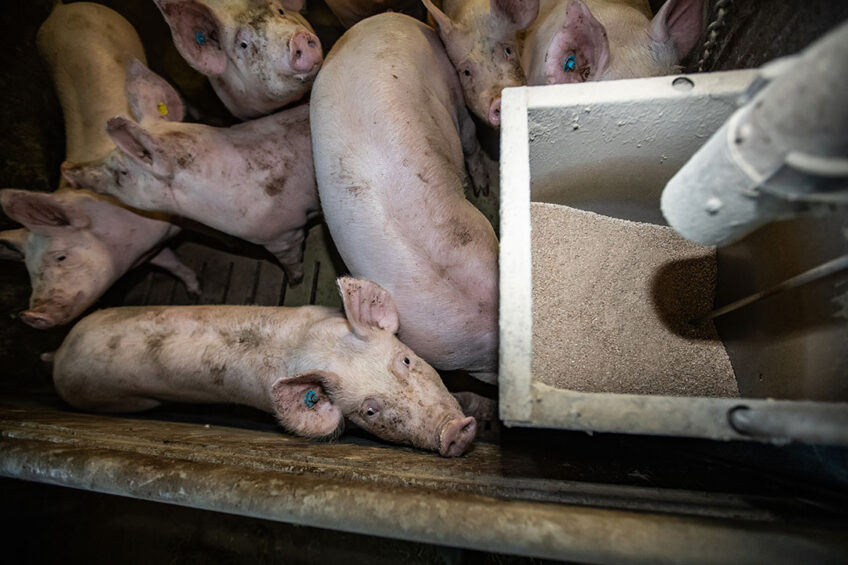Vitamin and mineral levels in pig diets

A close look at the situation in China and Brazil shows that supplementation levels of vitamins and minerals in pig diets are vastly different from the national recommendations. Here’s a look at why, and what the ramifications are for both countries.
A team of Chinese researchers recently published a survey of vitamin and mineral supplementation among producers representing about 90% of China’s national pig herd. What did they find?
It is not too surprising that there is a wide variation in the amount of vitamins (A, D, E, K, B12, pantothenic acid, niacin and choline) and minerals (copper, manganese, zinc and iodine) being given to pigs across China. After all, the vitamin and mineral content of other components of the diet can vary, along with their availability and other factors.
However, it may seem surprising that the levels of most vitamins and minerals being given to pigs in China are “far above” the recommendations published by China’s National Research Council and in the China Feeding Standard for Swine.
Supplementation in Brazil
The results are similar in Brazil. A survey there also found large variations in supplementation of most of the typical vitamins and minerals in that country, especially in the water-soluble vitamins such as B. In addition, similarly to what is occurring in China, average vitamin and mineral levels given to pigs across the Brazilian pork industry are much higher – between 40% and 240% higher – than the national recommendations.
There would not be such high levels of vitamin and mineral supplementation unless it was needed for good pig performance
It is not clear why levels of vitamin and mineral supplementation across the world’s 2 largest pork-producing countries are much higher than industry guidelines. But what is certain is that there would not be such high levels of vitamin and mineral supplementation unless it was needed for good pig performance.
From this conclusion, it is logical to surmise that the current level of oxidative stress being experienced by today’s pigs – which vitamin and mineral supplementation counteracts – is higher than ever.
Oxidative stress
Oxidative stress in pigs is associated with diseases and clinical conditions such as endotoxaemia or septic shock, respiratory infections and Porcine Reproductive and Respiratory Syndrome (PRRS) as well as being associated with stressful moments in the pig’s life where the physiological state of the animal is disrupted, explains Fellipe Freitas Barbosa, team lead global technical management for swine at EW Nutrition. “It is quite clear that pigs are exposed to various types of stress during their life,” he says. “There is dietary, social and environmental stress and metabolic stress to achieve higher and higher performance levels.”
In a 2021 review of oxidative stress sources in pigs and how this stress should be studied and mitigated, Chinese scientists also caution that giving too much of the amino acid methionine in the diet can also result in oxidative stress.
It has been shown that oxidative stress and oxidative DNA damage increase dramatically during late gestation and lactation
Barbosa notes that some life stages of the pig are especially stressful, such as weaning. In the life of sows, two stages stand out. “It has been shown that oxidative stress and oxidative DNA damage increase dramatically during late gestation and lactation,” he explains. “The shift from anabolic to catabolic metabolism is a huge burden for the animal. Similarly to what has been observed in dairy cows, there is a dramatic increase in energy utilisation needed to support the onset of milk synthesis, especially since piglet numbers are increasing and more milk is needed. Several metabolic reactions are involved in milk synthesis, and reactive oxygen species are formed in the mitochondria during this process as by-products of the electron transport chain reaction.” He says that other life stages are also relevant, adding, “I would always recommend an antioxidant protection strategy over all phases of production.”
Core vitamins and minerals
Barbosa urges the use of several core vitamins and minerals as well as a blend of antioxidants such as ethoxyquin and propyl gallate. Ethoxyquin has been used for decades as a dietary additive that helps pig performance on a variety of fronts.
The 3 vitamins and minerals that he says have produced better results over the years compared to others are vitamin E, selenium (in either organic or inorganic form) and vitamin C (in “protected” form).
“But remember that all of them are more than antioxidants and also have biological functions,” says Barbosa. “And specially vitamin E, where you can see a lot of research evaluating its replacement by other antioxidants. Antioxidants are not a replacement to nutritional levels of vitamin E. Therefore, the recommendation is to always follow the nutritional guidelines you are using.”
Plant-based antioxidants
In terms of future research needed in the area of oxidative stress mitigation, Barbosa says novel antioxidants from plants, called phytogenic compounds, may be the ones to pay attention to.
Kostas Mountzouris, professor of animal nutritional biotechnology at the Agricultural University of Athens in Greece, echoed this thought in a “Hot Talks” interview in All About Feed. “Nutrigenomic studies addressing the effects of dietary bioactive compounds such as plant-based bioactive compounds on the activation and magnitude of the animal’s adaptive capacity to counteract stressors leading to inflammation are clearly required,” Prof Mountzouris stated. In the new book Gut Microbiota, Immunity, and Health in Production Animals, published in January 2022, he and his colleagues have a chapter outlining how supplying poultry with vitamins, minerals and phytochemicals directly supports oxidative defense.
Plant-based compounds
Plant-based compounds with antioxidant capacity include curcumin, a compound from the turmeric plant, and resveratrol, a compound derived from grapes and wine. In Table 1, the Chinese researchers who published the 2021 review of oxidative stress outline the antioxidant effects of curcumin, resveratrol and 16 other natural antioxidant compounds in pigs. Clearly – as Barbosa points out – due to the dietary, social, environmental and metabolic stress that today’s pigs are subjected to in order “to achieve higher and higher performance levels”, the need for antioxidants in the pig diet will only increase.
Exciting findings about plant-based compounds are sure to come as research into the effects of these compounds on livestock performance expands, building on past and current research, showing their positive effects on human health.











